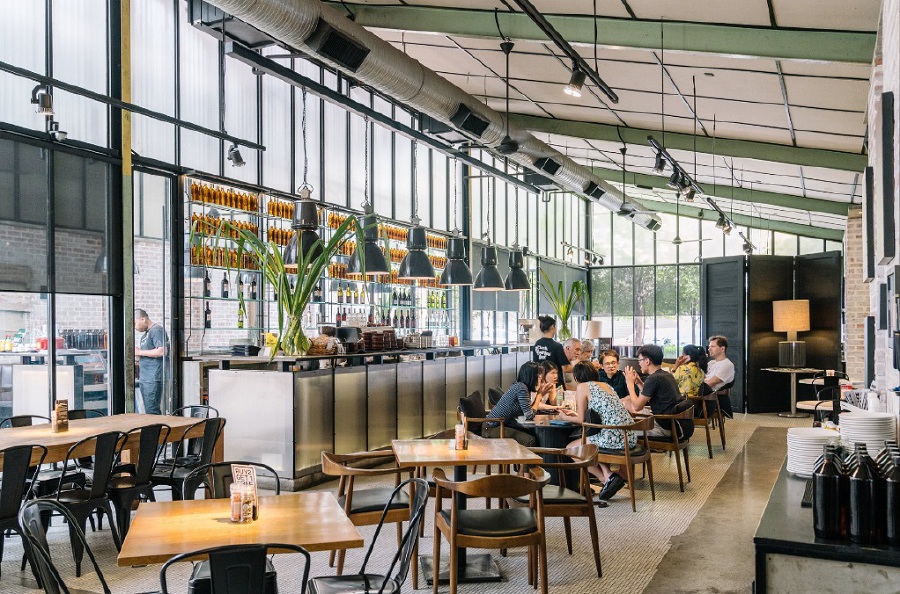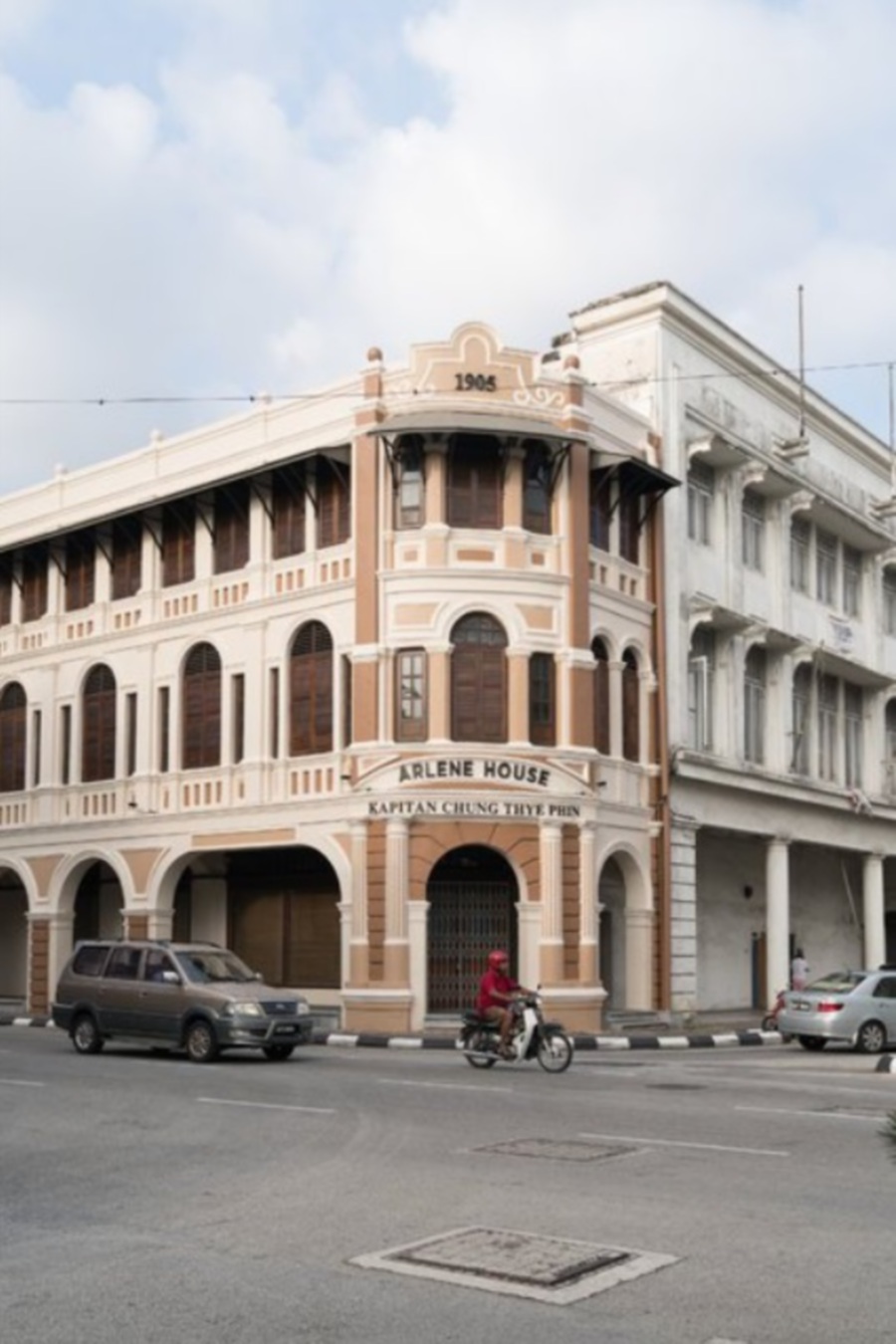[ad_1]
IPOH: In the middle of the 1900s, the northwestern Malaysian town of Ipoh was the world’s largest producer of tin and its booming success showed.
Informally described by locals as the “town that tin built,” Ipoh grew from a sleepy village in the valley of the Kinta River to a hotbed of cabarets, night life and conspicuous consumption, a city fuelled by the fortunes of the Chinese-mining towkays (bosses). But the collapse of tin prices in the 1980s curbed the city’s rise and soon Ipoh faded, existing primarily as a pleasant place to retire (the surrounding limestone karst mountains are beautiful and the resulting hard water is claimed to make food taste better), or as an eating stop for travellers shuttling between the mountain region of Cameron Highlands to the east and the island of Penang to the northwest.

(File pix) Fried macaroni and cheese and cinnamon tea at Thumbs Cafe. Lauryn Ishak/The New York Times Photo
But Ipoh, Malaysia’s third most populous city, and one largely unknown outside of Southeast Asia, is staging a comeback to become the country’s hippest destination. The city’s fortunes began to improve in 2004 when the water theme park Lost World of Tambun opened, backed by the Malaysian conglomerate Sunway Group (its founder and chairman Jeffrey Cheah Fook Ling was born close to Ipoh). More recently, in 2014, the Lithuanian artist Ernest Zacharevic, as he had done in Penang’s Georgetown, placed his imprimatur on the city by beautifying old buildings with a series of murals. But perhaps the greatest change – one propelled by homegrown talent – has been the boom in hip cafes over the last few years.
Ipoh, now, is roaring back in style.
The city, the capital of Perak state, has a core that is relatively compact, with roads largely plotted in a grid system – planners redrafted the town after parts of it were destroyed in a sweeping fire in 1892 – so it’s easily walkable. (Be prepared to sweat; year-round daytime temperatures hover around a humid 90 degrees). It also has a number of pretty shop-house and heritage buildings around the Old Town, like the Railway Museum playfully referred to by the British during the colonial era as the Taj Mahal of Ipoh.

(File pix) The New York Times Infographic on the location of Ipoh. The capital of Perak, Ipoh is Malaysia’s third most populous city and the country’s hippest destination.
The catalyst for Ipoh’s new tilt was arguably the Sekeping Kong Heng hotel. Opened six years ago, it took the peeling bones of a hostel once used by performers at a Cantonese opera and updated the interiors with glass and steel; the effect is remarkable, modern and yet artfully dilapidated, a sensitive reimagining of a storied, decrepit space. The hotel opened on Kong Heng Square in the city’s Old Town, and was soon followed by other newcomers nearby, such as the cafe Burps & Giggles. Offering a simple menu of bar food – burgers, pizza, fish and chips – its most appealing aspect is the almost hallucinatory interior, with junk furniture, mismatched furnishings, haphazardly cobbled-together lamps and the centrepiece mural of a woman with curly red hair who seems lost in thought. It was a novel concept for a town more famous for bare-bones restaurants serving food like ayam tauge (cold chicken with beansprouts) and nasi kandar, a rice with honeyed chicken and curry sauce, locally known as nasi ganja for its addictive qualities and ability to put the diner to sleep.

(File pix) Plan B in Ipoh. Lauryn Ishak/The New York Times Photo
Other businesses followed. Patisserie BoutiQue opened on the street called Jalan Sultan Yussuf with a menu of salads, soups, sandwiches, pasta and excellent desserts (the tiramisù has dense mascarpone and a strong kick of Baileys Irish Cream), and an interior with whitewashed exposed brick walls, white subway tiles, poured concrete floors and a soundtrack of old French songs.

(File pix) Patisserie BoutiQue in Ipoh. Lauryn Ishak/The New York Times Photo
Around the corner, Plan B is a contemporary restaurant with a high ceiling, giant windows and tile floors. The menu is international but pays homage to Malay ingredients; the spaghetti agli olio features bunga kantan (torch ginger flower), the pungent, floral plant used in the Southeast Asian dishes rojak and laksa, lending the Italian classic an Asian flavour profile.
Cafes continue to open in the town’s colonnaded shophouses, tucked between established businesses like silk shops, watch repairers and travel agents.
Chokodok (Malay for banana fritter) has accommodations above its intriguing, tumbledown, reggae-themed restaurant. Opened by two brothers who had spent some time in the islands off the coast of Peninsular Malaysia, it has tree trunks as decorations, the flotsam and jetsam of a beach shack, and music that’s consistently reggae. A former orphanage on the eastern fringe of central Ipoh transformed into Thumbs Café, an eclectically furnished restaurant specialising in Malay dishes.

(File pix) Old Town in Ipoh. Lauryn Ishak/The New York Times Photo
M Boutique, a hotel that mixes the rustic, industrial and whimsy, became the city’s most high-style property in an area rife with used-car showrooms. When it opened “this concept was not available here,” said Joey Chong, a sales executive for the hotel. “Lots of youngsters come from Kuala Lumpur [two hours away by car or train] for the cafe hopping. It’s much easier to get around here than in KL.”
But the trend isn’t confined to central Ipoh. A number of cool joints have sprung up in Ipoh Gardens East, a commercial and residential area near the Aeon Mall.
Tea Coffee Game opened among a drab row of businesses and office buildings. It has bright interiors, Ikea furniture, and there’s a utilitarian feel to it, but its conceit is the games found throughout – traditional board games like checkers and ludo as well as a video console.
“We have games to make the place different, to help people revisit their childhood, bring them good memories for when the food is served,” Chung Kok Heung, a science lecturer at a local university and a co-owner, told me one evening. “A few years ago most youngsters here moved to other countries, but now, people are coming back because they like the food, the environment, the slower lifestyle.”
Its menu, as I found often in this new breed of restaurants, focuses on Western food and includes a pretty salad served in a Mason jar, full of crisp green and purple cabbage, peppers, carrots, cherry tomatoes, and served with smooth sesame dressing. A big draw here is the all-day breakfast, with up to seven items like bacon, grilled tomatoes, eggs and hash browns, costing only RM19 (about US$5).
Nearby, Zakka Loft has colourful curtains; a sky mural with the words “Do You Have a Dream?”; a wall unit full of knitted soft toys (it offers workshops on how to make them); and fabulous iced fruit drinks.
These places are free from hipster posturing and have an easygoing ambience.
Of all the cafes and restaurants I visited, one stood out. Classically trained chef Sam Lau left Ipoh in his early 20s to work in kitchens around Asia and Europe, returning to his hometown after 16 years. “I came back to my country and couldn’t find good bread,” he lamented. Thus began a mission; for two years he sold bread from his bicycle outside the restaurant Plan B.
In Dec 2016 he opened Artisan Handmade Bread in an old shop-house near Kong Heng Square, where he works in a small open kitchen behind the bread counter. “I am up at 3am every day, baking bread, running the kitchen. Ipoh people are old-fashioned, they like value for money.” The excellent food is a steal – the set-lunch menu (he closes for the day at 4pm) includes soup, a main dish, an amuse bouche, dessert and lemon iced tea, for RM28.
Despite his background and training, Lau avoided opening a formal-dining restaurant. “The young generation doesn’t want fine dining. It wants good food and casual. I want to provide good honest food cooked right in front of you, bistronomy style. And I also want to educate locals on what goes into commercial bread and artisan bread.” His bread is outstanding, fibrous and supple, and justly anchors the menu – generous chunks served with the mixed vegetable soups, thick slices bookending the grilled sandwiches.
“Lots of youngsters leave here to come back, they want to share what they learned from overseas and show something new to Ipoh,” Lau said.
Ipoh is all the richer for it. — NEW YORK TIMES
To read the original article, CLICK HERE

(File pix) The Kinta River in Ipoh. Lauryn Ishak/The New York Times Photo
阅读更多